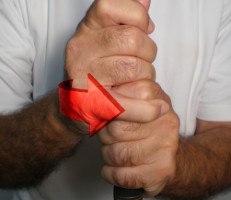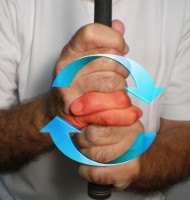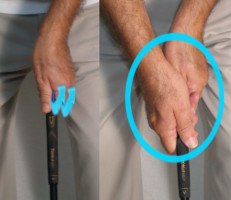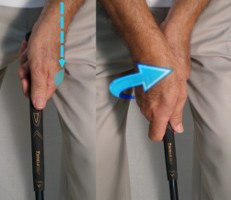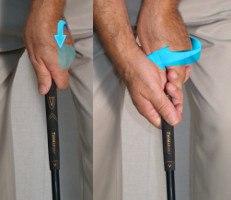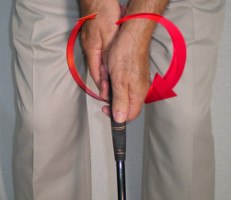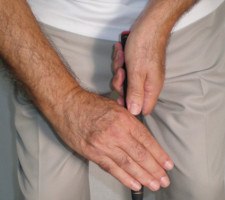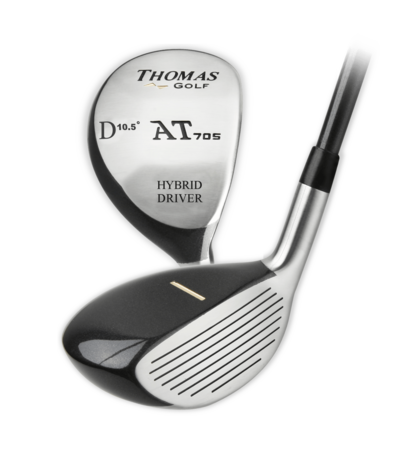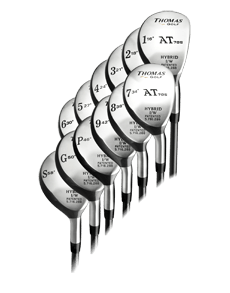|
Pros and Cons of Every Golf Grip Style |
Best Grip? Overlapping vs Interlocking |
Grip style: Interlocking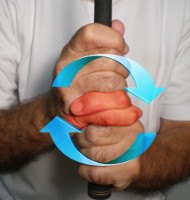 |
Hand position: Neutral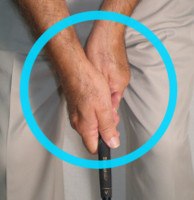 |
Putting grip style / hand position: Cross-handed (left hand low) for short putts, reverse overlap / neutral for long putts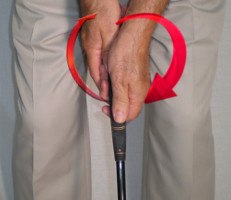 |
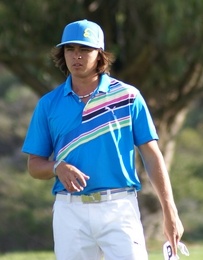
Rickie Fowler Grip Update
Rickie Fowler is known for using a unique and unconventional golf grip, commonly referred to as the “double overlap” or “interlocking” grip. This grip style is different from the traditional overlapping grip that many golfers use.
In Rickie Fowler's grip, he interlocks the pinky finger of his right hand with the index finger of his left hand. This creates a tighter connection between the hands and helps promote a unified and connected feel throughout the swing. The rest of his grip is relatively neutral, with the thumbs running down the grip and the palms facing each other.
The double overlap grip is not commonly used by all golfers, but Fowler has found success with it and has become widely recognized for it. It is worth noting that the choice of grip style is a personal preference, and different players may find success with different grips. It is always important for golfers to experiment and find a grip that feels comfortable and allows them to make consistent and solid contact with the ball.
It's worth mentioning that the grip is just one element of the golf swing, and other factors such as posture, alignment, and swing mechanics also play crucial roles in a golfer's overall performance. It's important for golfers to work with a qualified instructor or coach to ensure their grip and swing mechanics are properly aligned for optimal results.
As with any aspect of the golf swing, it's important to find a grip that feels comfortable and allows for consistency and control. Golfers of all skill levels should experiment with different grips and seek professional guidance to determine the grip style that works best for them.
is known for using a unique and unconventional golf grip, commonly referred to as the “double overlap” or “interlocking” grip. This grip style is different from the traditional overlapping grip that many golfers use.
In Rickie Fowler's grip, he interlocks the pinky finger of his right hand with the index finger of his left hand. This creates a tighter connection between the hands and helps promote a unified and connected feel throughout the swing. The rest of his grip is relatively neutral, with the thumbs running down the grip and the palms facing each other.
The double overlap grip is not commonly used by all golfers, but Fowler has found success with it and has become widely recognized for it. It is worth noting that the choice of grip style is a personal preference, and different players may find success with different grips. It is always important for golfers to experiment and find a grip that feels comfortable and allows them to make consistent and solid contact with the ball.
It's worth mentioning that the grip is just one element of the golf swing, and other factors such as posture, alignment, and swing mechanics also play crucial roles in a golfer's overall performance. It's important for golfers to work with a qualified instructor or coach to ensure their grip and swing mechanics are properly aligned for optimal results.
As with any aspect of the golf swing, it's important to find a grip that feels comfortable and allows for consistency and control. Golfers of all skill levels should experiment with different grips and seek professional guidance to determine the grip style that works best for them.
He may have changed his famously looping swing, but Rickie Fowler’s grip remains as solid as ever.
The swing changes, instituted with the help of super teacher Butch Harmon, are credited with propelling Fowler to four top-5 finishes in the 2014 major championships. Fortunately for Fowler, the tweaks required little if any grip revision. (Changing one’s grip, even a tiny bit, can be an awkward and drawn-out process.)
While his swing has always been unorthodox, Fowler’s grip is pretty standard. He interlocks the fingers, a la Tiger Woods and Rory McIlroy, with the right and left hands in a neutral position on the handle. This likely helped him adapt more easily to his re-routed backswing.
Now onto the greens, where the Rickie Fowler grip method takes a turn for the intriguing. In 2012, Fowler switched from a conventional grip style to the left hand low technique. While it worked well – he claimed his first PGA Tour win after switching – Fowler wasn’t as comfortable stroking long putts this way. The answer: Cross-handed for short to mid-range putts, conventional beyond that.
Fowler displayed his putting prowess at the 2014 PGA Championship, holing putt after putt inside 10 feet with the cross-handed grip, and draining a 29-footer (among others) on Sunday’s final nine with his traditional style.
Moral of the story: Sometimes, the grip that feels best works best.
